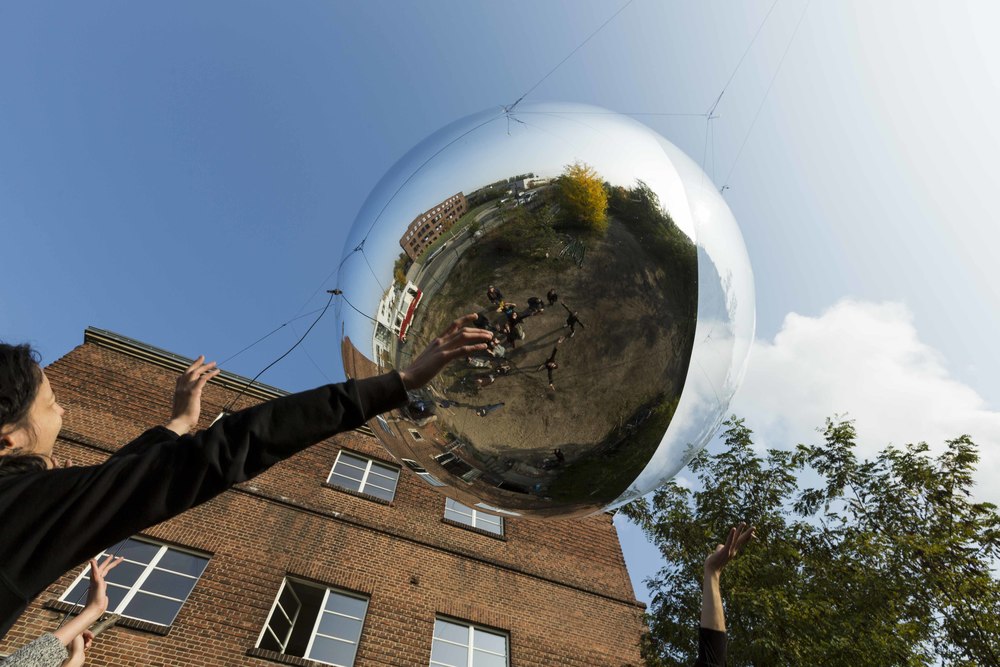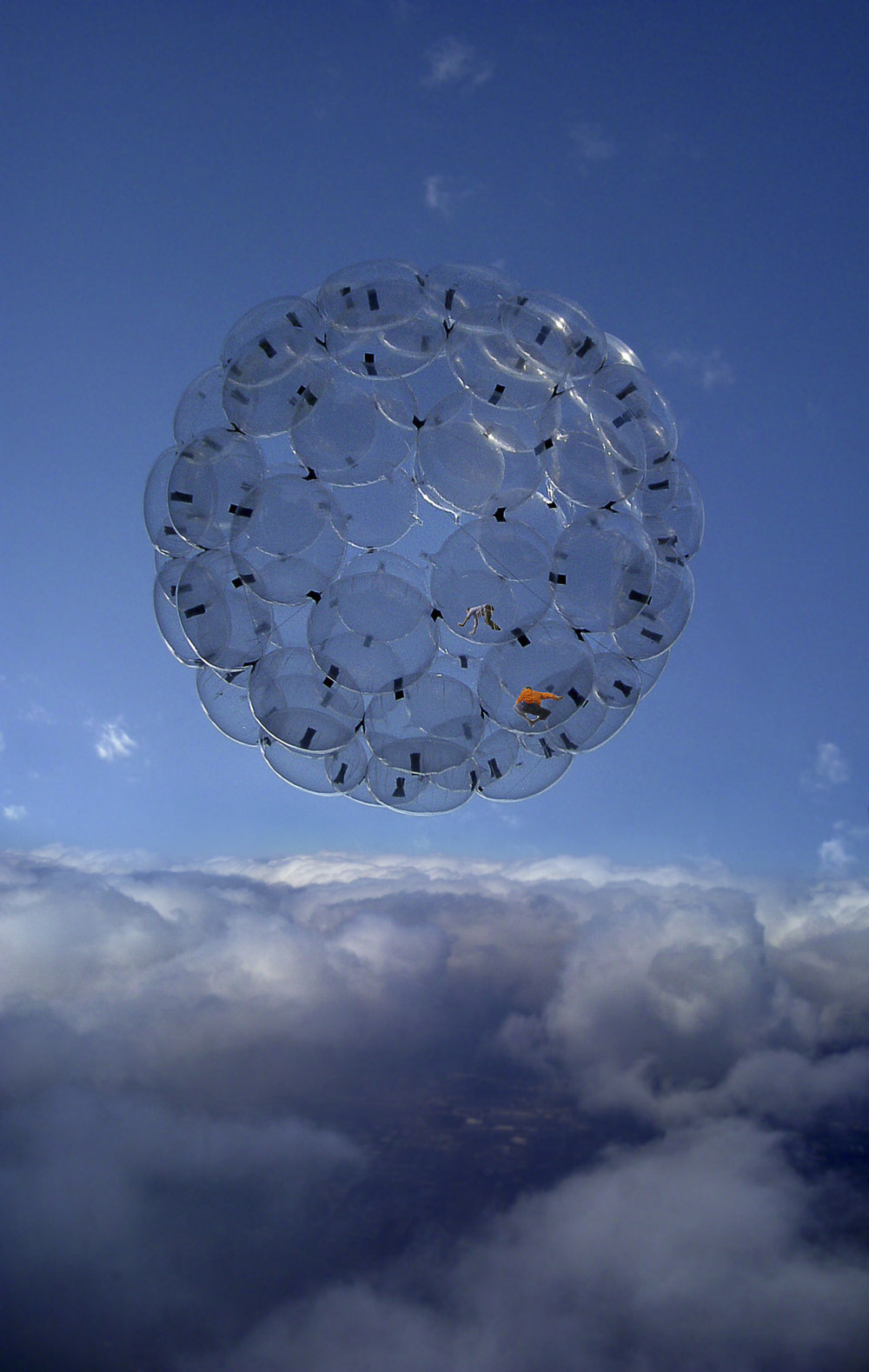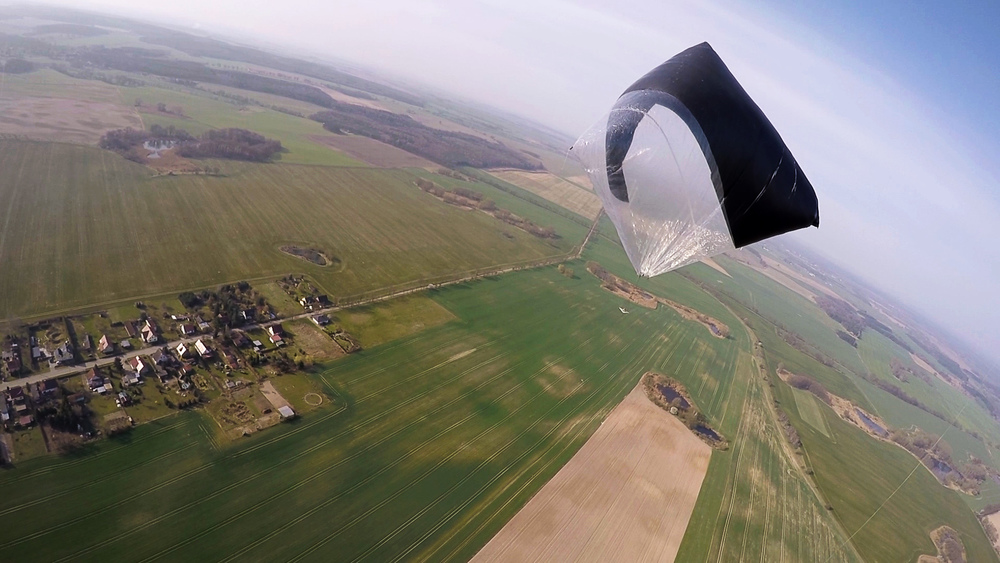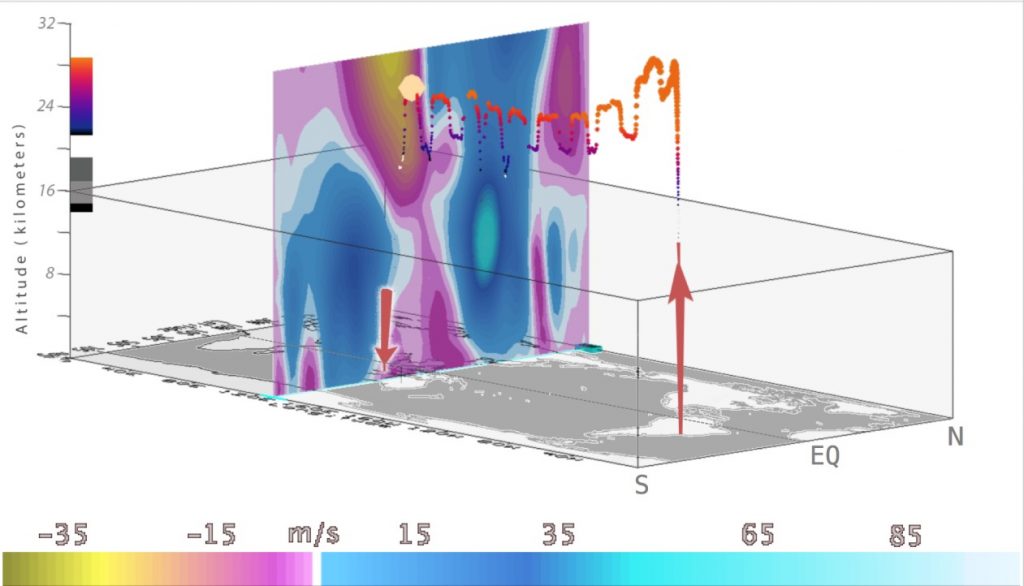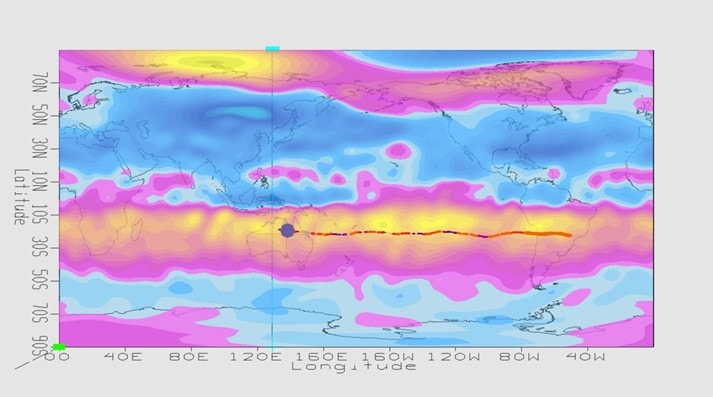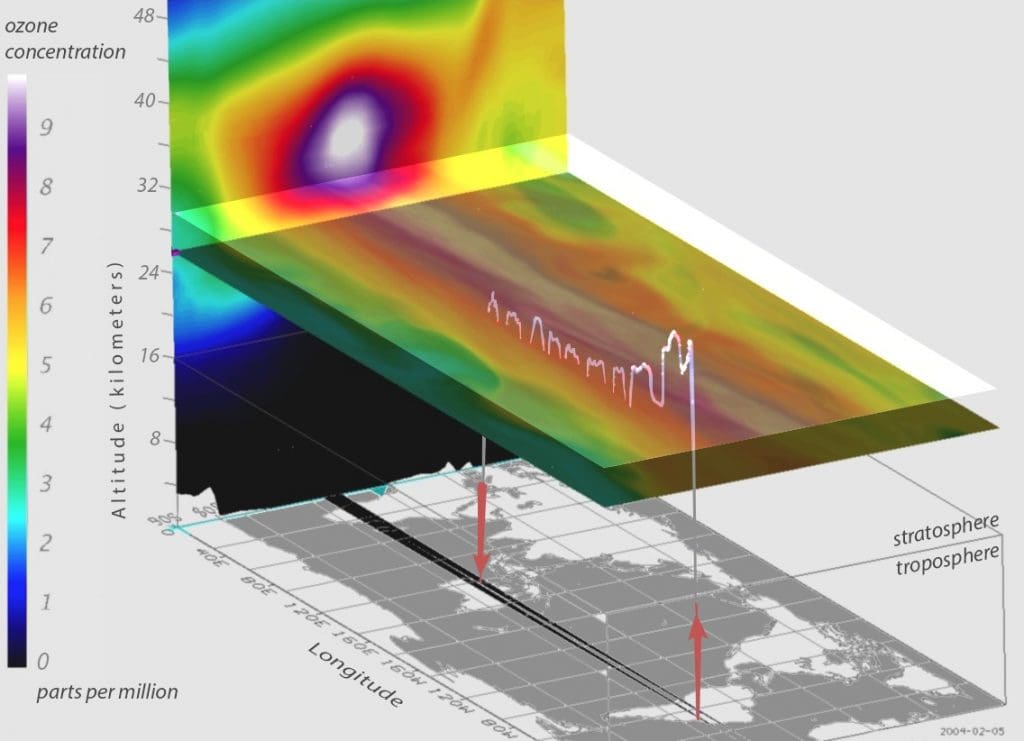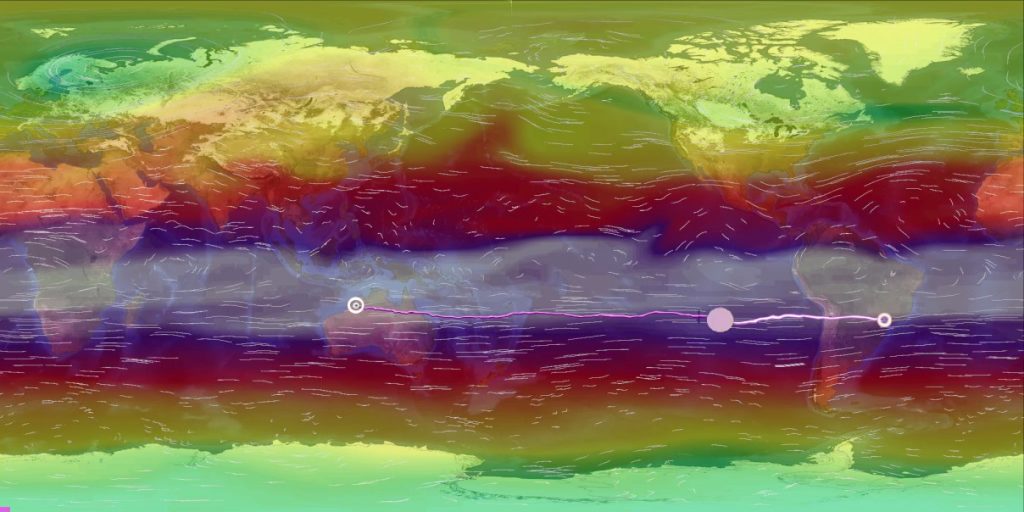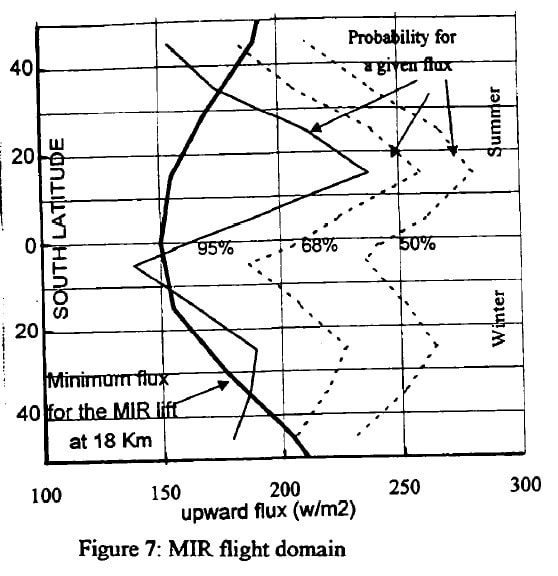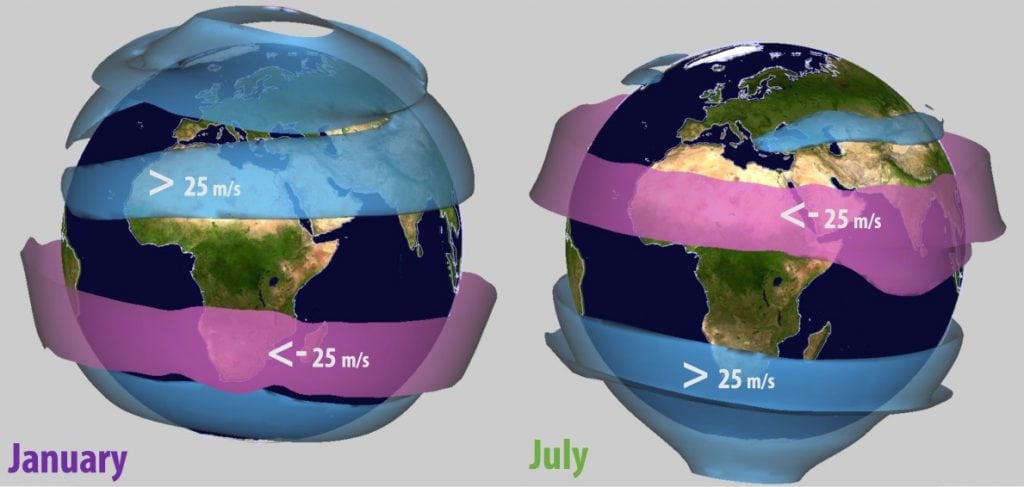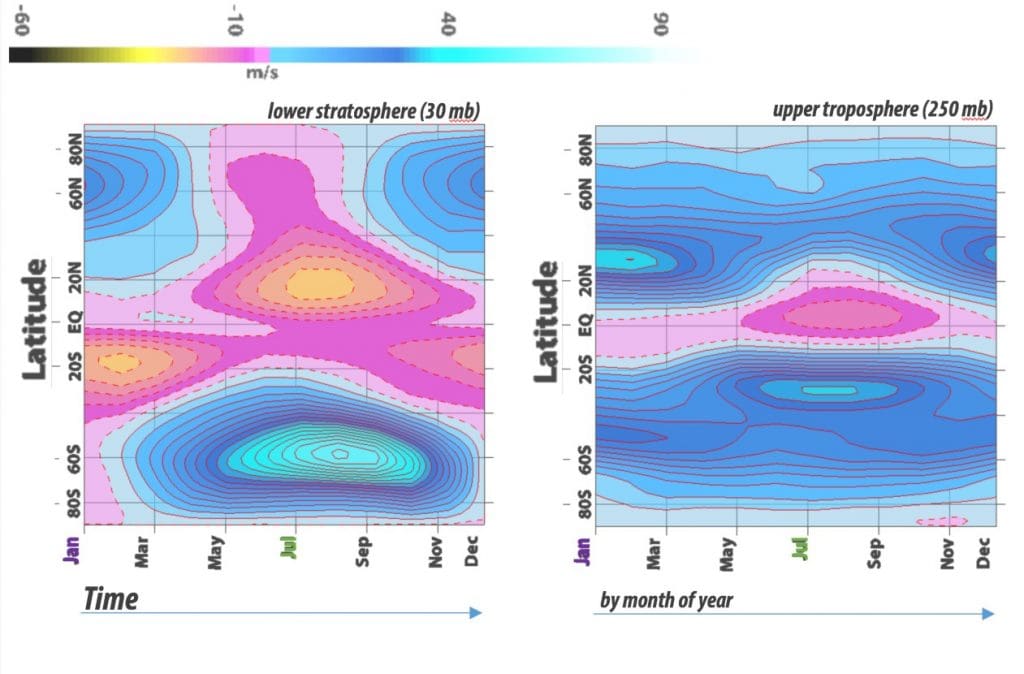High Altitude, Low Opening (H.A.L.O.)[1]
Three–dimensional warfare is said to have begun in China in the first years of the Common Era with the practice of manned flight on massive kites to reconnoiter enemy movements.[2] Perhaps more plausibly, kites were reportedly used by the Chinese as battlefield signaling systems, while the most vivid story of all recounts the use of an Aeolian kite designed to produce unearthly sounds when launched in the dead of night over the enemy camp during a famous battle of the early Han Dynasty, a gambit that successfully frightened the opposing army off.[3] It took nearly 2000 years from the dawn of the kite era until the physical and behavioral properties of gases were well enough noticed for the Montgolfier brothers to concoct the great “globes aerostatiques” that found experimental deployment in the Napoleonic Wars. Yet the first militarily effective use of balloons arrived only with the American Civil War although even here, as in the cases above, the airships in question remained tethered rather than released in free flight. Controlled aeronautics in fact makes its entrance in sky history only with the rise of machine aviation in the early 20th century—first with propeller aircraft, and later in the form of guided missiles of all kinds. Today, in yet a further phase in this indeterminate history, we see emerging the soon–to–be–ubiquitous phenomenon of the unmanned, remote– or automatically–piloted drone. And yet fully controlled flight is not the summit ambition of our modernity. Deeper still, and possessing an even greater magical hold on the imagination, has been the thermodynamic fantasy of achieving propulsive motion, or action of any kind, by agency of a ‘work–for–free’ mechanism.[4]
Entropy, it is true, never decreases, but this does not mean that the strategy of moving it around is either expensive (energetically or temporally) or does not itself constitute an engine of a peculiarly magical kind. In fact, it is the very nature and fact of entropy’s dynamism that affords a landscape of unfamiliar pathways and opportunities rarely grasped fully by the modern technological imagination trained and compelled to seek advantage only in ‘take–what–you–want–and–pay–for–it’ setups where the rule of the ledger sheet and the balance book holds sway. In other words, the simple fact that potential of one type (in this case, energy) endlessly and ineluctably decreases, migrates or transforms in any free environment does not mean new and different potentials are not continuously generated elsewhere as a direct result of these very developments. For the relentless cleaving and changing of the universe’s ‘matter flow’ establishes the rule of the differential in nature, and following from it the irrepressible reality of the gradient without which nothing would ever happen, and thanks to which so many great things not yet imagined, easily could.
Once, importantly, in the middle of the last century, the discrepant model of the clock was opposed to that of the cloud with a view to re-connecting thought to the empirical outcomes of actual nature, and away from the controlled and artificial conditions of the laboratory setting.[5] Today the logic most wondrously sensed and tapped by inventors, dreamers, scientists and makers of speculative—read plastic and sensuous—work, is that of weather, a system of unceasing innovation, in which nothing is wasted, in which no component fails to assert its influence, and in which, despite the abundance of behaviors and forms it throws up, no causes are dissociable from their effects. The attraction here, in the words that Karl Popper once used to describe something pretty close to it, resides in the idea of “plastic controls” that not only accept but actually celebrate indeterminacy in the temporal form world, that relinquish the hard control of our rationalist (read here ‘mechanist’) traditions. Today we are increasingly seeing the pervasive gradient/differential in nature as the wellspring of form and of the work equations that produce it.[6]
For all these reasons—indeed because of this overarching trend in historical ontology—sky has become a place, a plenum, a place to move and think differently, indeed it is becoming both a mode of thought itself and the foundation of an emerging ethos or system of ethoi.
Sky is an ocean (as Buckminster Fuller used to proselytize) only here it is one just as replete as the aqueous one around and below us that is awash with currents, strata, weather systems, differentials of density, temperature, direction, humidity, pressure and their shifting, always provisional and developing correlations. It is a system that generates singularities (points where qualitative changes occur) and tendencies at every moment and in every place. But here is the ironclad rule that governs: Nature always reduces the gradient (the inescapable Second Law applied now to every manifestation of form).
The simple process by which it works is no other than this: energy flows from higher, hotter, and denser to lower, cooler, and rarer. To sublimate the gradient nature sets into motion a flow. These flows, in sum, are today what matter more. One no longer concerns oneself solely with absolute values that represent averages of uneven distributions or conversely with isolated and discontinuous points. These flows and their reductions are becoming at once the stuff of science and of the ecological and artistic imagination alike.
The Aerocene, it might be said, is the name of a new ecological space that grasps into unity both the scientific and the artistic imagination and the neurological apparatus itself. For it targets primarily an attitude of sensing energy, sensing potential, sensing in a vast and only apparent void what the ancient Chinese geomancers, ink wash painters and military strategists referred to as ‘shi’—the inbuilt propensity of any situation, position, or configuration to develop (flow) in a specific direction and in a certain way.[7] Every moment flows into the next and every place abets or resists this flow in just the manner that is specific to it. When prehended together these variables form an ocean of particularities rife with harvestable action and energy.
A critical and moving component in the perception-confounding launch of a colossal airship like the Aerosolar is the assembly of a membrane from supermarket tote bags whose function is to establish the paltriest of separations between an inner and outer atmosphere. The fragility of the surrounding film is sufficient nonetheless to both delay and capture the impetus toward thermal equilibrium that no force or thing can forever escape, and in so doing to convert it for a time—perhaps for a very long time indeed—into manifest, even sublime semi-directed motion. What is pitched into aesthetic relief here in a way that would be entirely familiar to late 19th century (embryological) biologists and 1980’s (nonlinear) mathematicians alike, is the salience of what is known as the separatrix, the marvelously subtle boundary point or line between two or more valleys and on which a process precariously hangs before it is forced to choose a direction of motion or fall. A ball for example can balance only for so long on a pinnacle or crest before it must yield to the infinitesimal atmospheric imbalances that set it fleeing to one of its several topographical destinies. But the ball can be said, in the moments before the system ‘breaks’ or launches, to be in a state of infinite sensitive search. Its job is to sense gradients. This is the physics and politics of the ‘aerocene’.
The bladder inflates slowly to claim a vast parcel of the air ocean. The solar stream courses onto and through it as the various component materials convert light energy into units of heat. The internal numbers build like steam in a locomotive chamber, but the expanses here are so vast that the tiniest differential in centigrade measures results in exponential expansion—so much less pressure than required by the iron horses of yesteryear yet in service of so much more startling effect. It is of course not the difference in temperature, but the consequent ones of dilation, displacement and relative weight that induce, at one threshold moment and no other, the liftoff and rise. The drama plays out at such gigantic scale all while connected to a variable so meager and demure that the spectacle simply fails to read as physics at all.
But then that is presumably why we have come: to bear witness to the singing of a new era in technics, sensation, and knowledge in the face of which the dogmas that for long subtended thought and behavior in a presumed universe of grave and fixed things, now fall or, shall we say, now melt into air.
— Sanford Kwinter
Notes:
[1] https://en.wikipedia.org/wiki/High-altitude_military_parachuting
[2] John Buckley, Air Power in the Age of Total War (London: University College London Press, 1999), 22-23.
[3] Berthold Laufer, “The Prehistory of Aviation,” Field Museum of Natural History, Vol. 18(1)(1928): 34.
[4] The concept of ‘work for free’ dates back to a thought experiment devised by James Clerk Maxwell in his 1872 Theory of Heat that Lord Kelvin later memorialized as “Maxwell’s Demon”. In the experiment in question a sentient agent is posited who has the ability to control the passage of molecules from one chamber to the other simply by recognizing which are fast and which are slow and letting the slow pass into one chamber and the fast into the other. In this a way the warm are sequestered from the cool and without adding heat, energy or work their migrations will have brought about an increase in the temperature of one part of the system and a cooler one in the other—hence flagrantly contradicting the Second Law. The idea of work for free, despite the objections legitimately raised regarding the cost of the demon’s presence and labors, has been endlessly and equally legitimately hypothetically revived by practitioners such as Leo Szilard (Szilard engine) in physics, and Stuart Kaufmann (“order for free”) in biology. The Second Law may be globally inviolable but probing its many defects and open flanks at a variety of sub-global scales has proven consistently fruitful for both science and thought.
[5] Karl Popper, “Of Clocks and Clouds: An Approach to the Problem of Rationality and the Freedom of Man” in Objective Knowledge: An Evolutionary Approach (Oxford: Oxford University Press, 1972) (original: 1965).
[6] Eric Schneider and Dorion Sagan, Into the Cool: Energy Flow, Thermodynamics, and Life (Chicago: University of Chicago Press, 2005).
[7] Francois Jullien, La Propension des Choses (1992) translated as On the Propensity of Things: Toward a History of Efficacy in China (New York: Zone Books, 1995).
